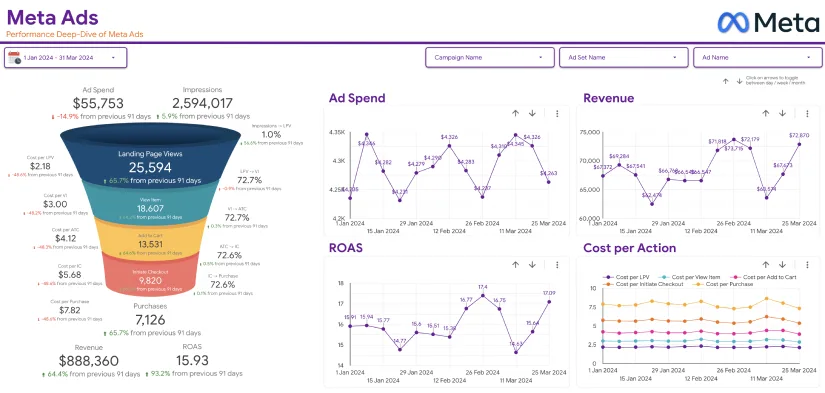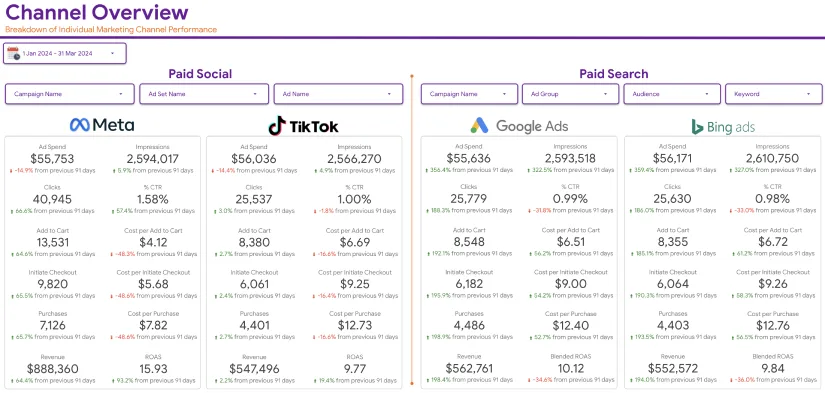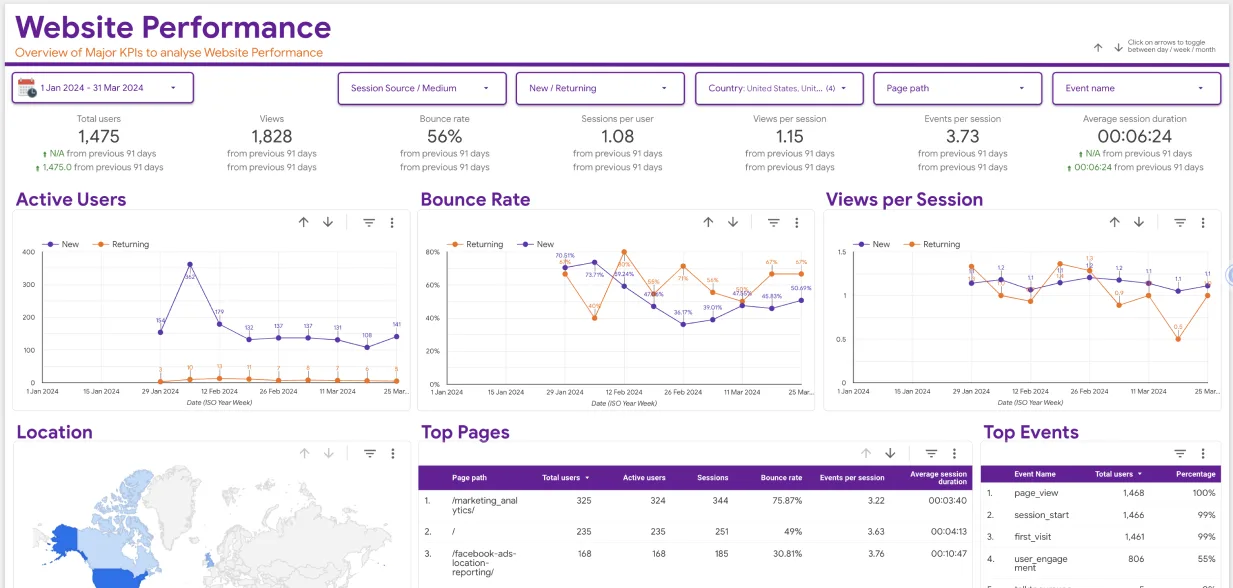In the world of digital marketing, SEO reports for clients can either be a game-changer or a confusing maze of metrics. Many agencies still make the mistake of overwhelming their clients with raw data and jargon-heavy dashboards. But here’s the truth: SEO reporting isn’t just about showcasing performance — it’s about telling a story, offering clarity, and guiding decision-making.
This blog explores how to create SEO reports that clients can actually understand and value, breaking down everything from what to include, how to present it, and why it matters — all while ensuring it aligns with your client’s goals.

What Is the Purpose of SEO Reports for Clients?
At their core, SEO reports for clients should answer one key question: Is our SEO investment delivering measurable results?
Clients aren’t just paying for keywords and backlinks — they’re investing in growth, visibility, and conversions. A good SEO report:
- Tracks progress toward KPIs
- Highlights wins and areas of concern
- Provides insights for next-step actions
- Builds trust and transparency
Whether your client is a startup or an enterprise, the goal is the same: present SEO results in a way that drives understanding, not confusion.
Why Do Clients Often Struggle to Understand SEO Reports?
If you’ve ever seen a client stare blankly at your SEO report, you’re not alone. Many reports are overly technical, lack context, or focus on vanity metrics like impressions and clicks without linking them to real outcomes.
Key reasons for confusion include:
- Overly complex terminology
- Lack of business relevance (metrics that don’t align with goals)
- Inconsistent reporting formats
- Missing recommendations or insights
The solution? Focus on client-centric storytelling, not just data-dumping.
Which Metrics Truly Matter in SEO Reports for Clients?
Not all metrics are created equal. Depending on the client’s goals, you’ll want to prioritise actionable SEO metrics. Here’s how to segment what matters:
1. Organic Traffic
Demonstrates your website’s visibility and performance across search engines. Break it down by landing pages, keywords, and location.
2. Keyword Rankings
Track changes in positions for target keywords. Include context: Are these keywords converting? Are they relevant to current campaigns?
3. Click-Through Rate (CTR)
Highlight how well meta titles and descriptions are working. A drop in CTR with high impressions? Time to optimise those snippets.
4. Bounce Rate and Dwell Time
Show engagement quality. A high bounce rate might indicate poor user experience or irrelevant keyword targeting.
5. Conversions and Goal Completions
The holy grail of reporting. Tie SEO work directly to conversions like form submissions, sales, or lead generation.
6. Backlink Profile and Domain Authority
Showcase the quality and quantity of backlinks — especially helpful for long-term strategy validation.
Where Should You Present This Data — and How?
The structure and presentation of your SEO report can make or break its effectiveness. Clients don’t need to see every spike in crawl errors — they need insights that matter to them.
Here’s how to organise your report effectively:
A. Executive Summary
Start with a non-technical overview that includes:
- What happened this month
- Why it matters
- What we recommend next
B. Performance Overview (Visualised)
Use dashboards and graphs (like Google Data Studio or Looker Studio) to visually show:
- Month-over-month performance
- Year-over-year trends
- Channel comparison
C. Breakdown by Sections
Split data by organic traffic, keyword performance, technical SEO, content updates, backlinks, and conversions.
D. Action Points
Each section should close with a “What this means” paragraph and suggested next steps.
Who Should Receive the Report — and How Often?
Not every stakeholder needs every detail. Consider tailoring reports based on recipient roles:
- Executives: Want ROI and growth trends — keep it high level
- Marketing Teams: Want campaign performance and conversion data
- Technical Teams: Want insights into site speed, crawl errors, etc.
Report frequency tips:
- Monthly: Ideal for ongoing retainer clients
- Quarterly: Useful for strategic planning and long-term clients
- Weekly (summary reports): Only if running high-velocity campaigns
How to Turn SEO Reports Into Conversations
Reports shouldn’t be static documents — they should spark dialogue. Build trust and strategy alignment by:
- Hosting monthly review calls
- Inviting feedback from clients on what they want more/less of
- Offering interpretation of what trends mean for business goals
- Connecting SEO results to sales performance or customer acquisition
Pro Tip: Always end your presentation with recommendations, not just results. Clients pay for insights, not charts.
When Should You Automate vs Customise Reports?
Automation tools can streamline your reporting process, but not everything should be automated.
Use automation for:
- Pulling real-time metrics from GA4, GSC, Ahrefs, etc.
- Visual dashboards (using Looker Studio templates)
- Weekly snapshots of ranking or traffic shifts
Customise reports for:
- Strategy-specific recommendations
- Executive summaries
- Campaign impact stories and observations
A blend of automation + personalisation ensures speed and substance.
Why Eaglytics Co Is the Right Partner for Actionable SEO Reporting
At Eaglytics Co, we don’t just deliver data — we deliver clarity.
As a trusted data and digital marketing analytics partner, we specialise in crafting SEO reports for clients that go beyond the basics. Our reporting services help clients see not just what changed, but why it matters — and what to do next.
Using tools like Google Data Studio, custom SQL queries, and deep marketing insights, we tailor SEO dashboards and reports that map directly to your goals. Whether you’re an eCommerce brand, SaaS company, or service provider, our SEO analytics solutions ensure that every stakeholder can make confident, data-informed decisions.
We’ve helped global brands like Google, Schlumberger, and Chargebee understand their digital performance at a granular level. If you’re tired of lifeless reports, we’re here to bring your data to life.
Conclusion
Creating SEO reports for clients doesn’t have to be a chore or a guessing game. When done right, your reports can be a powerful extension of your agency’s value, strengthening relationships and driving long-term retention.
To recap, here’s your checklist for SEO reporting success:
Focus on outcomes, not just metrics
Use visuals and structure to simplify the data
Tailor reports to the right audience
Turn reports into opportunities for dialogue
Blend automation with personalisation
Align everything with business goals
By thinking beyond rankings and CTRs, you position your agency as not just a service provider, but a strategic partner in growth.





